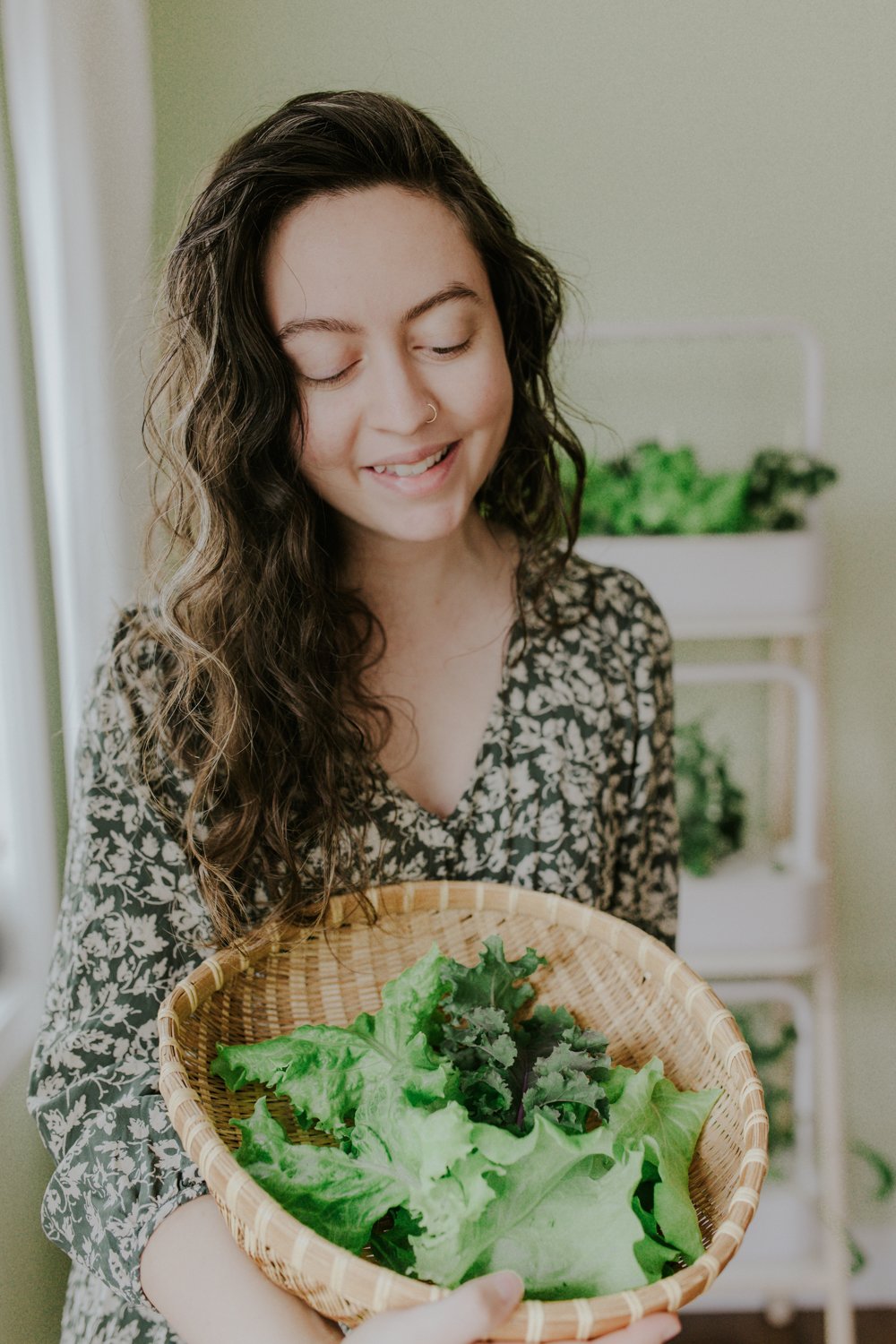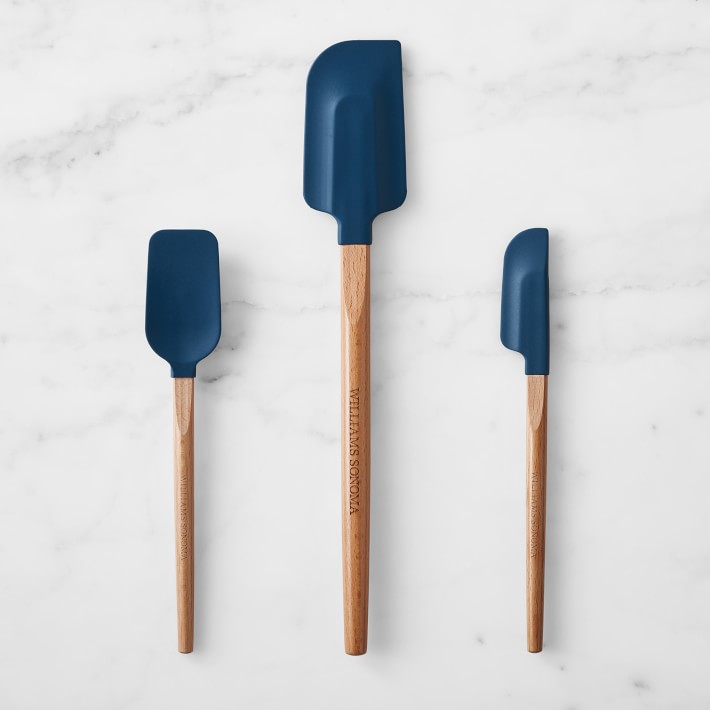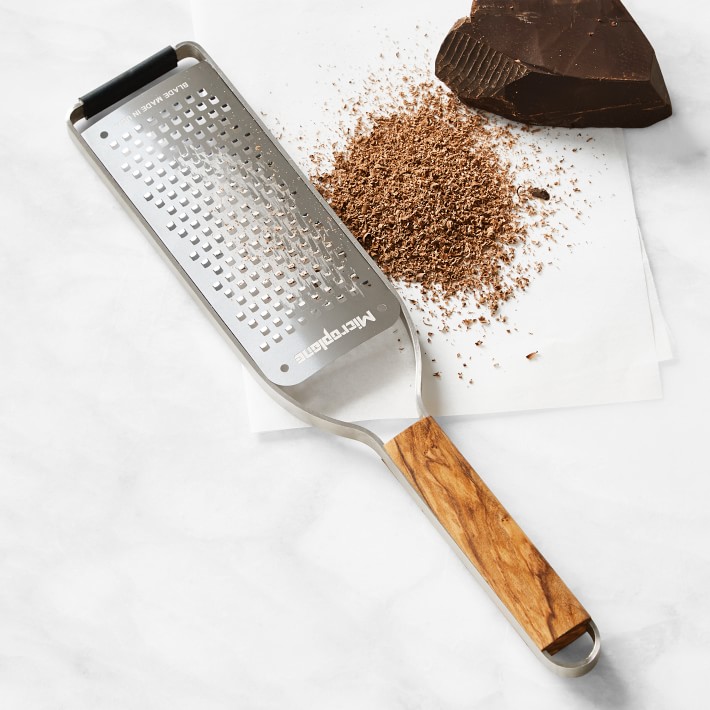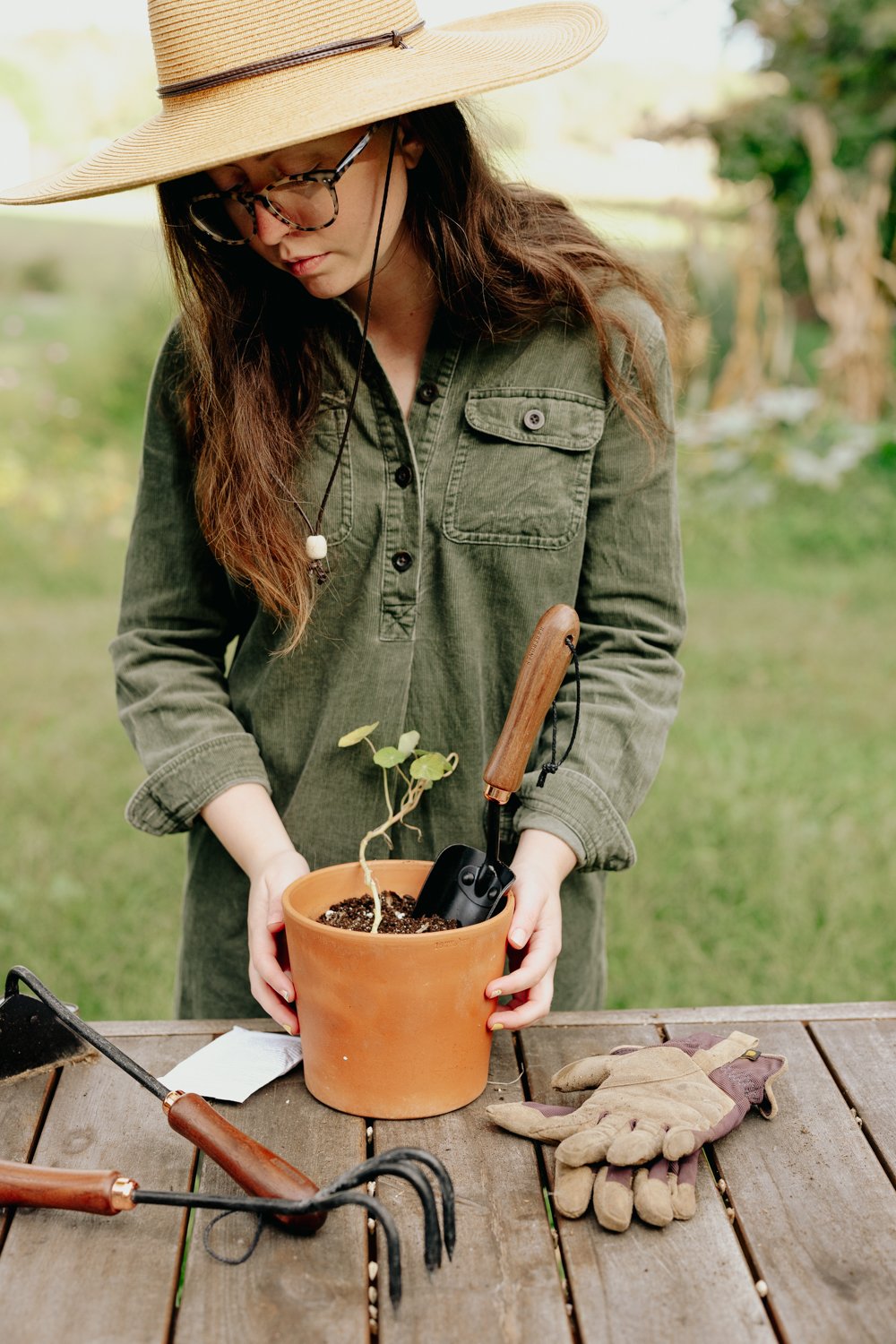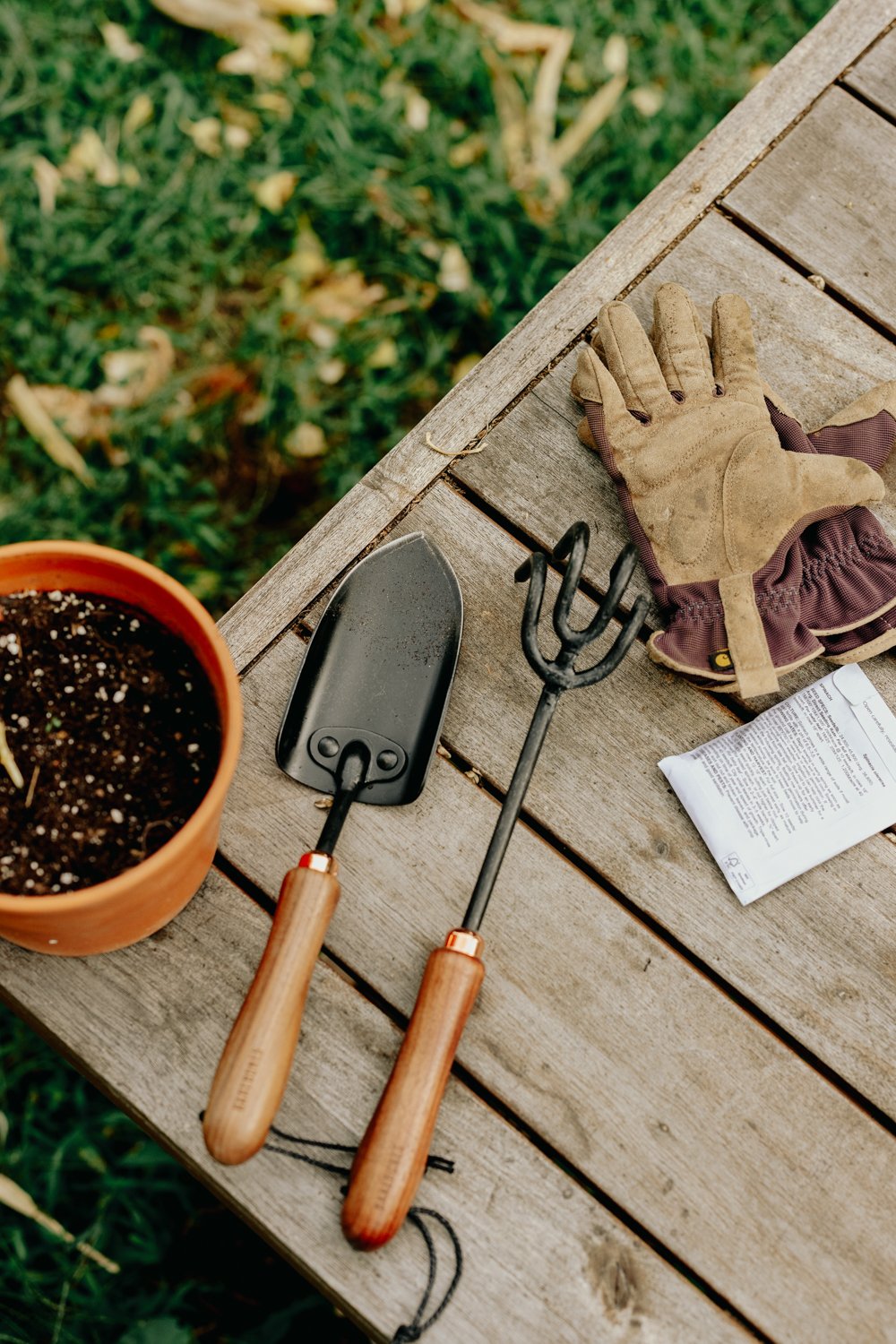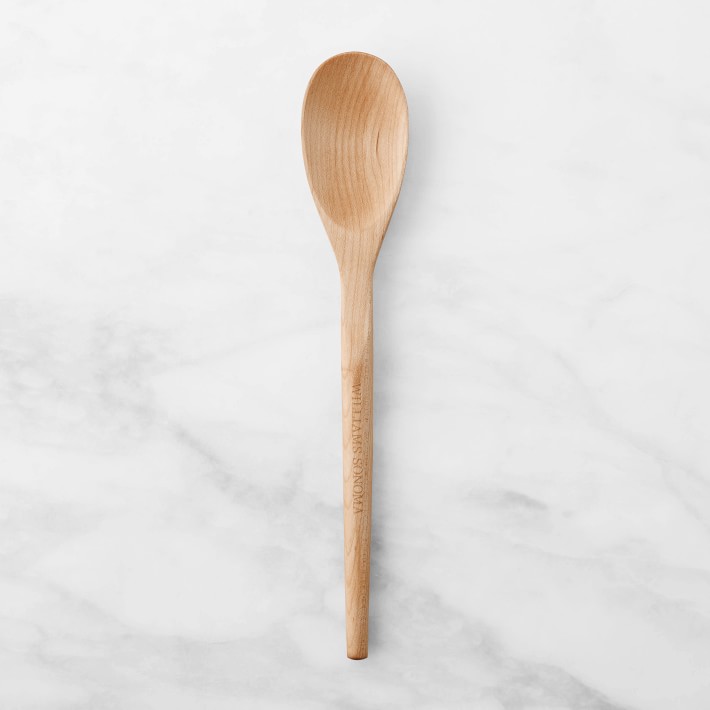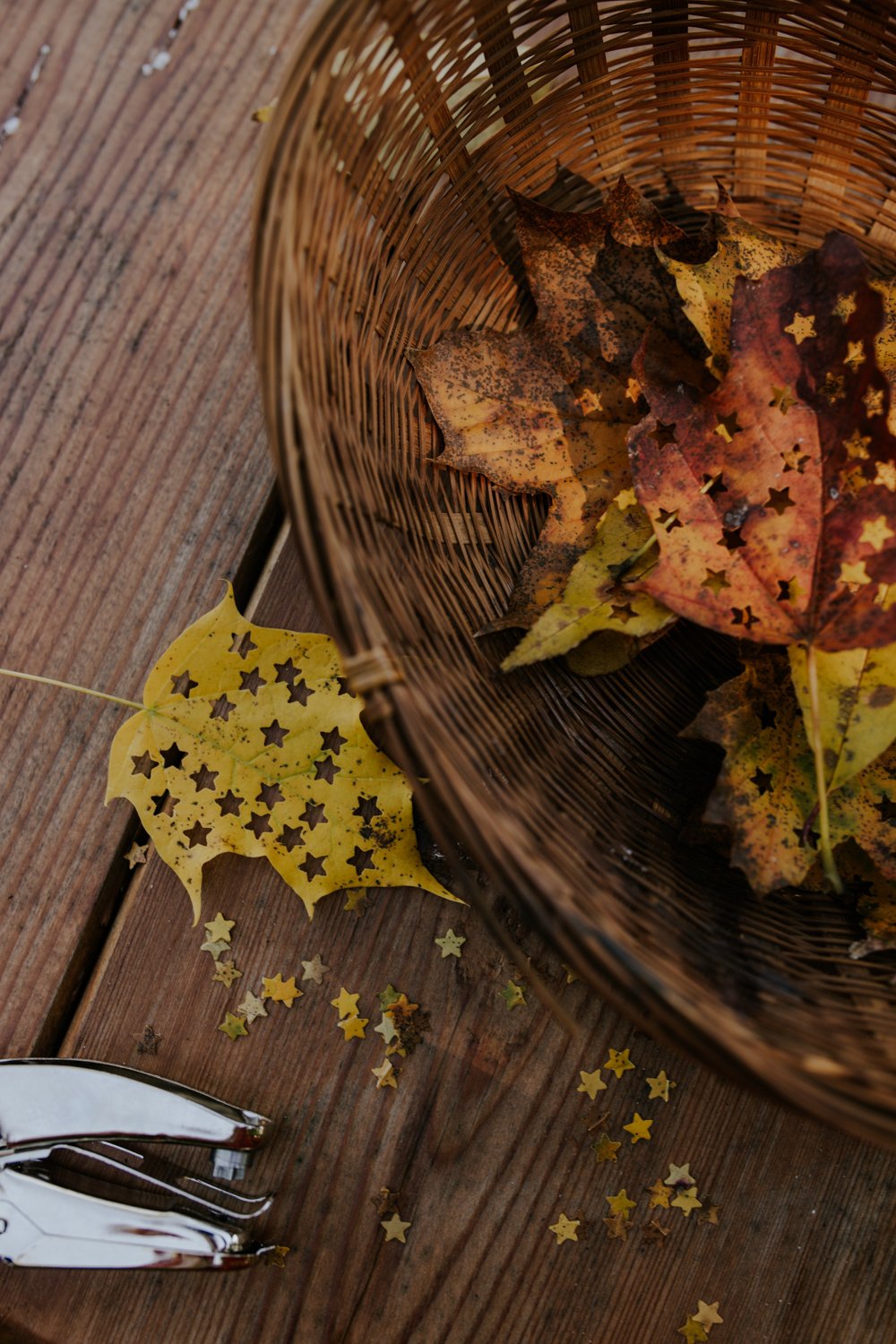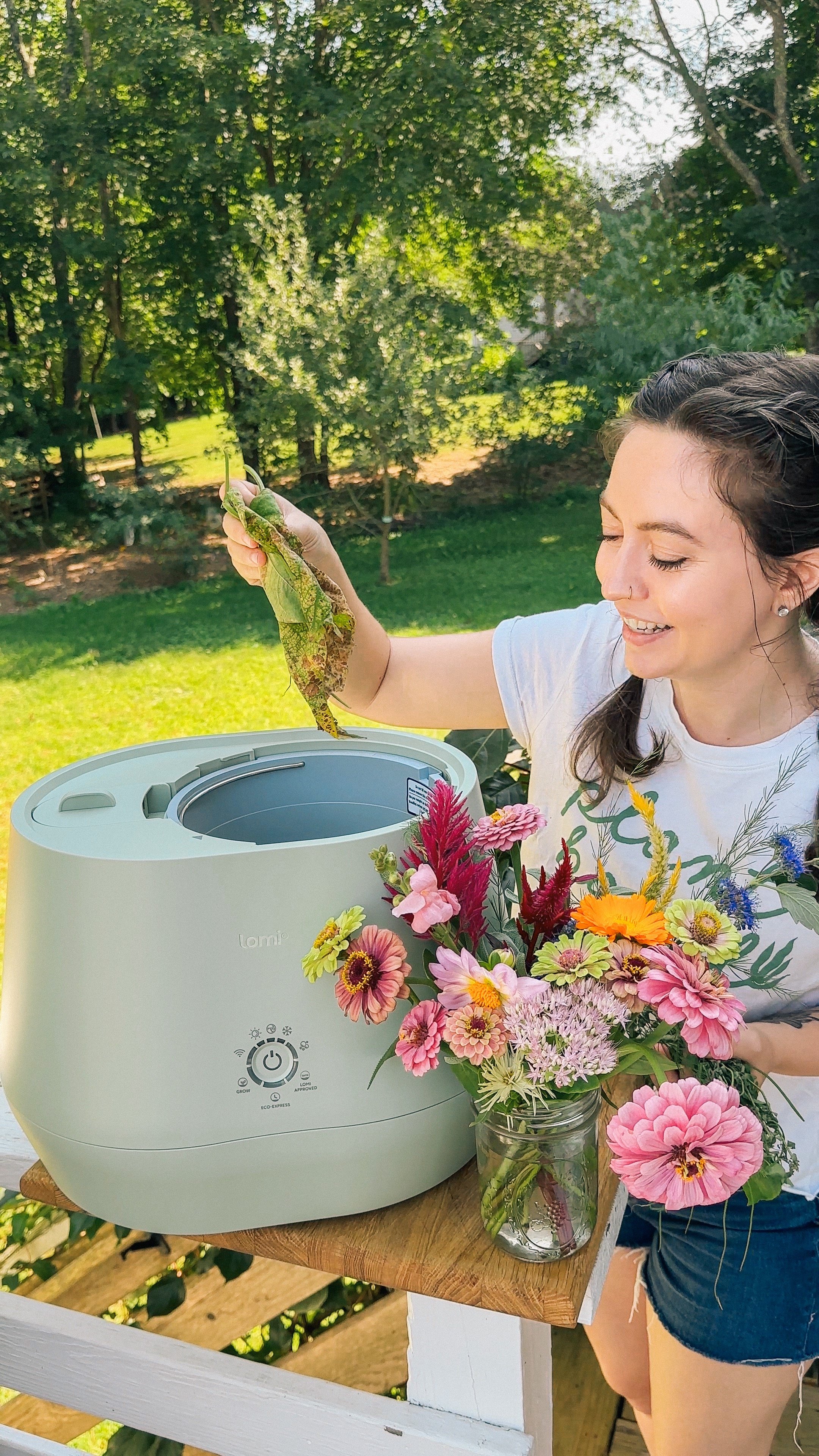BACKYARD GARDENING MADE SIMPLE
What’s in my apothecary cabinet
HAVE YOU EVER MADE YOUR OWN TEA BLENDS?
Maybe you’re used to getting your tea in individual sachets from the grocery store. The idea of loose leaf teas sounds like something that only real tea connoisseurs would do.
But did you know that most of those little pre-packaged tea bags actually contain plastic?
You can’t even throw them in your compost because they won’t break down properly due to the plastic. And the heat from the water can release harmful compounds from the plastic tea bags into your cup.
The Cottage Peach is reader-supported. When you purchase through links on our site, we may earn an affiliate commission at no additional cost to you. All opinions are our own.
Why Keep an Apothecary?
Here’s the thing about an old jam cabinet full of dried plants: it may not seem like much, it may not even seem necessary, but for me it is essential, and here’s why:
An apothecary is a source of comfort: The herbs within an apothecary provide relief and warmth and the sense of being well cared for.
An apothecary heals: Maybe not best suited for your worst ailments, but a steady hand you can look to. A cup of calming chamomile tea for when you can’t sleep, calendula tea for inflammation and nerves, mint tea when you need a quick pick me up, and red raspberry leaf tea for cramps and more.
An apothecary increases your independence: In times when essential supplies may run short, as happens with pandemics and supply chain issues, having a stocked apothecary provides a backup. Stored correctly, these dried plants are rich in essential vitamins needed for survival.
The Healing Powers of Tea + Tisanes
What is the difference between tea and tisane? Tea comes from one specific plant, the Camellia sinensis plant. Tea is always caffeinated. Technically speaking, any other herbal plant matter steeped in hot water is a tisane. However, most of us use the word tea interchangeably, so that is how I will refer to all my herbal teas and tisanes here. While herbs can be used to make poultices, tinctures, and creams, their most common use today is as an ingredient for tea.
There is a medicinal tea for just about every common ailment, from headaches to fever, acne to stomach upset. Along with its medicine, tea offers us comfort, companionship, and ritual.
Cups of tea in the morning calm stiff and aching joints, wake up your groggy mind and bring comfort after a long night tossing and turning.
Cups of tea in the afternoon, when mom stops by and you talk about whether or not the world is ending, bring you back to the here and now and away from worrying about the what-ifs and the should-haves and the would-have-beens.
Cups of tea after dinner wash away the endless news articles and likes and comments and to-do lists and the never good enough feelings and the Sunday scaries and the imposter syndrome and the pandemic and the climate crisis and the political climate and the war, war, war.
Cups of tea in winter warm your hands and lift your spirits, both essential in the stretch of long, dark days.
Cups of tea filled with petals dried in last year’s garden sun, cups of tea to mend you and energize you and bring you closer together.
It’s never just a cup of tea.
Have you ever made your own tea blends?
Maybe you’re used to getting your tea in individual sachets from the grocery store. The idea of loose leaf teas sounds like something that only real tea connoisseurs would do.
But did you know that most of those little pre-packaged tea bags actually contain plastic?
You can’t even throw them in your compost because they won’t break down properly due to the plastic. And the heat from the water can release harmful compounds from the plastic tea bags into your cup.
This is true even of many “organic” tea brands that are available. Many tea companies will refuse to even tell you what materials are used in their tea bags, which is doubly concerning. If you can’t compost them, they’ll just end up polluting the landfills and taking decades to break down.
Making your own tea blends from scratch doesn’t need to be intimidating or difficult. You can start with the most basic ingredients and work your way up from there. Since I have a more extensive herbal library, I’ll be talking about my apothecary in depth - but don’t be afraid to start small at first.
The benefits of loose leaf tea are many - they are medicinal, and generally available in higher quality than pre-blended teas.
Once you get the hang of making your own tea blends, you can even mix up batches to give as handmade gifts for friends and family. Just pour your tea into a nice jar or other container and add a simple ribbon for a zero-waste gift that everyone will love.
Are Plants Good Medicine?
The use of herbs, berries, and spices as medicine and comfort goes back tens of thousands of years. Women gathered plants, experimented with them, and treated all manner of health conditions. They passed this wisdom from generation to generation, sometimes orally, and sometimes in the form of recipe books.
While male physicians did, at points, take an interest, conduct studies, and publish papers on the use of plants as medicine (without mentioning women or allowing them to become doctors themselves), somewhere along the way, this once-vital knowledge was stripped of its importance, as the work of women so often is.
Luckily, this information didn’t completely disappear. Women continued to teach their daughters. History (her story, to be more precise) was studied and old wisdoms brought together in books and finally to the internet, where it is available to educate any budding herbalist.
An Invitation for Ease
Close your eyes and picture this. You're standing in the kitchen of an old farmhouse with wooden windows and creaky floorboards underfoot.
The fire is crackling nearby, and the scent of woodsmoke lightly punctuates the stillness and chill of winter.
You wash the our your teapot in the sink and listen for signs of life outside your window. All is calm and silent as the first snowflakes begin to land on the earth outside and the ground is coated in a hard layer of permafrost.
The work you set out to do is done, and you are tucked away at home with the rest of the afternoon stretching out before you.
This is your invitation to find ease in your day. Pour yourself a cup of tea, and put your feet up for a while.
The Best Way To Learn Herbalism
If you’re ready to begin your herbalism journey I highly recommend enrolling as a student in one of the many online courses at Herbal Academy. Their fully digital classroom offers professional guidance in an easy to navigate format that is welcoming of students of all levels and backgrounds. Click here to learn more
learning herbalism: book recomendations
I can’t attest to any of these books personally since I exclusively utilize Herbal Academy’s blog, courses and textbooks for my own education, but they are popular within the herbalism community and may be a good place to begin your learning journey. Click the images below to shop.
What Herbs should you have in your apothecary?
This is by no means an exhaustive list, but here are some common plants I would start with when first building your apothecary:
Chamomile - for anxiety and stress, a cup of chamomile tea will quickly calm your nerves. Roman chamomile (the variety you want for tea) grows very easily from seed and each plant produces a large number of flowers.
Peppermint - for bloating, gas, and some abdominal pain, mint tea also has a soothing aroma. Mints grow so well you’ll want to plant peppermint in a place you’re happy to let it spread, or in a container.
Ginger - a powerhouse with antimicrobial properties and a huge range of health benefits. Combined with peppermint, it makes the perfect tea for any upset stomach. Ginger grows from pieces of the root, and prefers shade. In warm climates it can be outdoors year-round, but in cooler climates it should be grown in a pot and brought inside for the winter.
Red clover - used for menopausal symptoms, arthritis, psoriasis, and respiratory problems such as bronchitis. Red clover is thought by some to be a weed, but it can be used as a lawn replacement, a nitrogen-fixing cover crop, or groundcover.
Dandelion - used to stimulate digestion and calm hot flashes, among other things. Dandelions are, of course, happy to plant themselves for you!
Lemon balm - calming, and is used for headaches, cold treatment, and digestive issues. It has a lemony aroma and is a tasty addition to any tea. Lemon balm is a member of the mint family, and like its relatives will be happy to take over your garden. It spreads mostly by seed, so cutting it back before seeds form will keep it in check.
Calendula - antifungal and antimicrobial. Helps prevent infection and heal injuries to body tissues. Calendula is also known to have anti-inflammatory and antioxidant components, which might help to fight cancer, protect against heart disease, and ease muscle fatigue.
Echinacea - an immune-boosting herb that may help your immune system fight off incoming viruses or infection. Studies have confirmed that echinacea can shorten the duration of the common cold, lessen the severity of its symptoms or even prevent it.
Red Raspberry Leaf - excellent source of potassium. Red raspberry leaf contains useful antioxidants including vitamin E, tannins, and flavonoids. Can provide support during all phases of the menstrual cycle.
Yarrow - reduces inflammation, acts as an antispasmodic useful in treating Irritable Bowl Syndrome (IBS)
Oregano - if you can only start with one herb, let it be oregano. This powerful plant has antibacterial properties, anti-inflammatory properties, may protect against cancer, diabetes and depression. I have personally cured an ear infection with a simple routine of one drop of oregano oil in the affected ear two to three times per day.
Lavender - my personal favorite. A popular nervine, lavender has deeply calming properties much like chamomile.
You can find most or all of these herbs available for sale here!
HOW TO STORE DRIED HERBS
Storing dried medicinal herbs in your apothecary doesn’t need to be complicated. As a general rule you should store herbs in a cool, dry place out of direct sunlight, inside of airtight glass jars. These Mason jars are my favorite for storing herbs. The jars seen in the images in this post are antique, so you’ll need to hunt them down at the thrift stores!
Why should you store herbs out of direct sunlight?
Herbs are pretty delicate once dried, and in order to protect the active compounds within each plant that give them their healing qualities it is important to protect them from the elements. UV light from the sun can quickly break down the compounds within your dried herbs that make them so useful.
Why shouldn’t you store herbs in plastic?
There is the possibility that herbs stored in plastic can absorb some of the toxic chemicals present in the plastic itself over long term storage.
Handmade Zero Waste Tea Gift Idea
Most everyone loves a handmade gift, and in these times of over-consumption it is more important than ever to be mindful in your gift giving this holiday season. Americans spent around $15.2 billion on unwanted holiday gifts in 2019, and 4% of them ended up in the trash. That waste doesn’t even include all of the packaging and wrapping materials that end up in landfills. Each year Americans alone use 4.6 million pounds of wrapping paper valued at over seven billion dollars. Fifty percent of that wrapping paper ends up in a landfill. That's 2.3 million pounds of used wrapping paper clogging up landfills.
A handmade gift of tea is a thoughtful way to show someone that you care and provide them with a gift that they will be able to use over and over again. You can mix up three different blends and find a set of matching jars to give as a little tea sampler, or make up one big batch of tea and distribute into a larger mason jar like the rose tinted jars from Ball. You don’t even have to wrap your handmade tea gift in paper - just add a simple ribbon with some dried fruit, pinecones or cinnamon sticks tied alongside it. Or, you can add a special mug to your gift that you know the recipient will love. Pour your tea into a cloth drawstring bag and place inside of the mug with a cute stirring spoon.
Wondering what flavor of tea to choose for your handmade gifts? Pick something that you know everyone will love such as chamomile or mint and add your own flair to make it unique to your personality or that of the gift recipient. You can personalize your tea gift any way you like with different add-ins like chocolate chips, candied fruits or flavored sugars.
Click and Grow Smart Garden 27 Review: Does it work?
Here in New England, the majority of the year it is too cold to grow most vegetables and fruits outdoors. We have a very short growing season and limited amount of time to harvest everything we need to put away for winter. I knew that if I could find a way to combine an accessible raised gardening system with indoor grow lights, we could continue growing food in the colder months and reduce our grocery bill at a time when produce prices continue to skyrocket. My love of vertical gardening continued to grow.
The Cottage Peach is reader-supported. When you purchase through links on our site, we may earn an affiliate commission at no additional cost to you. All opinions are our own.
My gardening journey with chronic illness
When I was 20, I was diagnosed with Psoriatic Arthritis, an autoimmune disease that affects my joints, and causes major fatigue and chronic pain. The nature of autoimmune conditions is that they come and go, and over the winter I found myself experiencing the worst flare up of my symptoms I’d ever had.
Suddenly, my homesteading journey had hit a snag - bending, kneeling, and lifting (all essential tasks on a homestead) were difficult. I wasn’t sure what gardening was going to look like for me in the spring, if I could garden at all.
It’s easy to feel like you’ve lost a part of yourself when your body doesn’t allow you to do the activities that mean the most to you. For myself, these were dark days until I found enough energy to make a plan. I knew I was going to need to modify my normal gardening routine in order to continue growing our own food, so we added raised beds. Suddenly the benefits of vertical gardening were crystal clear to me. So much of what makes gardening so difficult is the crouching required to plant, weed and harvest. With the garden raised to a more natural standing height, I felt way less limited in what I could accomplish and grow. I started to wonder - with our long winter months, were there options that could extend our growing season AND provide a more accessible indoor gardening system that wouldn’t hurt my back?
Here in New England, the majority of the year it is too cold to grow most vegetables and fruits outdoors. We have a very short growing season and limited amount of time to harvest everything we need to put away for winter. I knew that if I could find a way to combine an accessible raised gardening system with indoor grow lights, we could continue growing food in the colder months and reduce our grocery bill at a time when produce prices continue to skyrocket. My love of vertical gardening continued to grow.
Vertical gardening systems
Vertical gardening is for everyone. Whether you’re interested in designing a vertical garden of your own due to physical limitations, space constraints, or you just enjoy experimenting with different gardening techniques, vertical gardening is an easy way to add a unique and functional element to your gardens and grow food more efficiently.
If bending, kneeling or lifting is something that is hard for you to do, vertical gardening allows you to reduce the amount of physical effort involved in your everyday garden tasks. There is usually little to no weeding involved, and watering systems can be set up to automatically keep your plants hydrated. Harvesting is a breeze because you won’t be digging through a tangle of branches or vines looking for produce - everything will be highly visible.
If you have little space to grow your own food or no yard at all - indoor gardening kits can help you bring fresh produce to your kitchen easily.
Why does it matter if your produce is fresh anyway?
When you buy and consume fresh grown fruits and vegetables, you are less likely to be ingesting harmful preservatives, chemicals, or dyes that have been added to your food to make them look more appealing. Produce actually loses its nutritional value over time, so the quicker it's eaten, the more nutrients that can be gained from it. Unfortunately even something like lettuce may be up to two weeks old by the time it reaches your local grocery store - and on average, our produce travels fifteen THOUSAND miles to reach us. That’s a lot of opportunity for lost nutrients.
Indoor Gardening Kit
There are lots of indoor gardening kits you can buy, but I decided to try the Click & Grow Smart Garden 27 vertical gardening system for a few reasons. This setup comes with three Smart Garden 9s (the 9 means each unit can grow 9 plants, so 27 in total) as well as a vertical plant stand in a modern white and wood finish. I really liked that the plant stand would fit into my existing home style, and allow me to stack the gardens so they would take up less space and be easy to access as needed. I also liked that the lights are included, and on an automatic timer so I wouldn’t have to fuss with anything or remember to turn it off and on every night.
The Smart Garden 27 isn’t a hydroponic garden - it uses a water reservoir that only needs to be filled about once a month, and Smart Soil blocks with nutrients and seeds already inside. The seeds and soil blocks are completely non-GMO and pesticide free, and use a patented nano-material that automatically releases nutrients, oxygen and water your plants need to thrive.
I also really liked the variety of plants offered by Click & Grow - they have over 75 different plants to choose from right now, including a seemingly endless array of swiss chard, arugula, sorrel, cress, mibuna, pak choi, and multiple varieties of kale and lettuce, bell peppers, strawberries, tomatoes, hot peppers and peas. Or you can start an indoor herb garden with rosemary, celery, mint, dill, parsley, lavender and many different kinds of basil. There’s flower seeds if you want to add some beauty and color. They also have seedless pods available so you can try your hand at growing anything you want.
How to Set Up the Vertical Vegetable Garden
The Click & Grow vertical vegetable garden is going to make winter gardening indoors so simple. Set up was easy - the included plant shelf comes together in less than fifteen minutes and has easy to follow instructions with no tools required. Next you just click together the light bar that attaches to the top of the unit with a few simple snaps and you’re ready to grow.
To plant the vertical garden planters, all I had to do was place each Smart Soil block into the pods that nest within the water tank. You cover each pod with a clear dome that is provided to create a moist environment that is then removed once your seed has germinated. I filled the water reservoir and plugged it in. That’s really it! I was kind of shocked by how simple it actually was. The water reservoir has a float on the back corner that will sink to let you know when it’s time to add more water. There’s even an app where you can track the progress of your gardens.
For my first planting, I’m growing lettuce, tomatoes, basil and dwarf peas as well as the Fruit & Veggie mix pack with strawberries, chili peppers and yellow tomatoes and the Asian Cuisine Mix with pak choi, red kale and mibuna. This will supply us with a continuous stream of fresh fruits and vegetables that are normally out of season during the winter months, allowing us to fuel up on fresh nutrient dense produce grown in our own home.
It takes about 3-4 weeks for your plants to reach maturity, depending on what you’ve planted. Then you can start harvesting continuously - each plant pod will live for about 3-4 months, again depending on the variety that you grow.
Now, if you’re thinking this is way too much vertical vegetable garden to fit in your own home stay with me because while I’ve gone all out here with the Smart Garden 27, there’s multiple ways you can configure this system to work for your space. First off, the Smart Garden 9 which is used on this plant shelf is available individually - so you can grab just one garden and pop it on your counter or table. If that’s still too large Click & Grow also has a Smart Garden 6 which is just a smaller version with only 6 plant pods. You could grab a couple Smart Garden 9’s and just sprinkle them throughout your house! Personally I love the shelf system because it means less bending and kneeling for me and it takes up less space in our kitchen. In terms of deciding where to place your indoor garden, the grow lights can be fairly bright so if that’s something you are sensitive to I’d recommend just choosing a location in your home that is a little out of the way.
Indoor gardening tips
So what tips should you know before starting your indoor gardening journey? Honestly, it’s so much easier than gardening outdoors in a lot of ways. With this system, it’s a good idea to periodically clean out the water tank before you plant a new round of seeds to prevent any mold from developing. Keep in mind that you’ll want a spot that you don’t mind having basically a bright lamp glowing on for 16 hours a day - those grow lights are for real! You shouldn’t have any problems with pests since you’re inside, and you won’t need to fertilize since the Smart Soil pods have everything your plants need to thrive. There’s no weeding to do and watering is only done about once a month. So long as you are mindful not to cut your plants back too hard when you harvest, you should enjoy a nice big continuous harvest from your indoor garden!
Ready to start your indoor gardening journey? Click here to learn more about the Click & Grow Smart Garden system!
Stovetop Elderberry Syrup Recipe
A pot of elderberry syrup simmering on the stovetop is a welcome sight and essential addition to our herbal apothecary. You won’t have any trouble getting your children to try this sweet and fruity syrup when they feel a cold coming on either, since it tastes just like candy!
The Cottage Peach is reader-supported. When you purchase through links on our site, we may earn an affiliate commission at no additional cost to you. All opinions are our own.
Elderberry season is drawing to a close, and my freezer is filled up with this useful fruit. I spent the late summer months periodically checking for ripeness, clipping each branch back as the berries and stems turned from green to deep purple. Elderberries can be a challenge to remove, leaving your hands stained purple with the juice. That’s why I place my bunches directly into the freezer after harvesting, whole - this way you can easily remove the frozen berries in one fell swoop and preserve them at peak freshness for winter cold remedies, sweet syrups and more. A pot of elderberry syrup simmering on the stovetop is a welcome sight and essential addition to our herbal apothecary. You won’t have any trouble getting your children to try this sweet and fruity syrup when they feel a cold coming on either, since it tastes just like candy!
What Are Elderberries?
Elderberries are edible, small, dark fruits which grow wild in much of North America and other areas of the world. The bushes they grow on are attractive, making them a great addition to a yard or garden.
The bark, leaves, and roots of elderberry plants are toxic to humans and pets. But beginning in June, elderberry bushes produce eye-catching white blossoms in flat, disc-shaped clusters of tiny flowers. These clusters grow as big as 10” in diameter. They are beautiful and fragrant, and are also edible. The flowers can be eaten raw or cooked.
Of course, you don’t want to harvest all of the flowers, because then your bush would not produce any berries.
In fall, the elderberries themselves are ready to harvest. They should not be eaten raw, as raw elderberries may cause nausea, vomiting, and digestive problems. Cooking the berries removes their toxic properties.
What Do Elderberries Taste Like?
Raw elderberries should not be eaten, but we’re not missing much. Some people call them flavorless, while others find them bitter and tart. They’re much tastier when cooked with other fruits or sweeteners.
Uses of Elderberry
Elderberries can be used to make medicinal syrup, cordial, jelly, sauces, and wine. Dried elderberries are tasty in baked goods, and also make a soothing tea.
Benefits of Elderberry Syrup
Elderberry has a very long history of use as a medicinal plant, dating back as far as ancient Egypt, where it was used to help heal burns. It has also been used as a diuretic. Indigenous peoples used elderberry to treat rheumatism and fever.
Elderberry syrup provides significant antioxidant effects. The antioxidants in elderberries boost the immune system, and along with the berries’ abundance of vitamins A, B, and C, help to fight off infections.
The syrup is also high in fiber, B vitamins, iron, and magnesium, and is an anti-inflammatory.
Elderberry Syrup for Colds, Coughs, and Flu
First, a note: People who have auto-immune issues may want to avoid elderberries, as boosting the immune system is only likely to make symptoms worse.
Both elderberry syrup and elderberry tea are good methods of delivery for elderberries’ many health benefits. Elderberry tea with a bit of honey and lemon juice is particularly soothing.
Studies have shown that elderberry syrup may help to treat fevers, headaches, coughs, body aches, and other symptoms of the flu and upper respiratory infections.
Growing Elderberries
Elderberry plants are different varieties of the Sambucus tree. They are perennial, meaning you plant them once and they continue to grow each year. They can grow as tall as 12’, so they need a large area. They may tolerate partial shade, but won’t produce as many berries there, so it’s best to plant them in full sun. They do fine in both wet and dry soils.
Elderberry bushes provide a small harvest after the second year of planting. In their third year, they are mature, and can produce a 10-12 pound harvest.
Elderberry plants will spread through suckers, but are easily controlled by mowing them down when they appear. Propagating elderberries is easily done through cutting or ground layering.
Propagating elderberry bushes by hardwood cutting
To propagate an elderberry by cutting, check your plant for new buds, which will likely appear in February. Not every cutting will take root, so plant more than one to increase your likelihood of success.
Choose branches about the thickness of a pencil, with two sets of buds, and cut above and below each set. Cut the branch at an angle on one end to make it easier to push into the soil.
Plant directly into the ground or into a pot. If you use a pot, you can cover the branch with a baggie, misting regularly to keep the soil moist. Alternatively, you can place your cuttings in water until they begin to develop roots.
Elderberry branches take 8-10 weeks to root. If successful, you will see growth in the spring.
Propagating elderberry bushes by ground layering
By layering branches, we can force them to develop roots while still attached to the parent plant. This way they will continue to receive food and water without effort on their part.
Instructions for ground layering elderberry plants:
Choose a flexible branch that is growing close to the ground.
Remove any leaves that are on the area you want to layer.
Make a small cut on the side of the branch that will touch the soil, about 1/3 of the way through the branch.
Cover that area in soil, and if necessary peg the branch to the ground.
As the branch grows, you can stake the end of it into an upright position, being careful not to disturb its new roots.
Once a good root system develops, you can cut the branch off of its parent and move it to your desired spot.
Harvesting Elderberries
Elderberry flowers should be picked on a warm, dry day. Snip behind the flowers to remove the entire cluster in one piece.
Clusters of berries should also be cut as one piece. Snip with pruning shear or snips where the base of the berries meets the stem.
To make it easier to remove the berries from the plant, spread the clusters of berries on a cookie sheet and freeze them for two hours before using your hands to loosen from the branches.
Eating Elderberry Flowers
Elderberry flowers can be eaten raw or cooked. They are the only part of the elderberry plant that is non-toxic.
The raw flowers are crunchy, with a subtle floral taste. They are one of the sweetest-tasting flowers, and are sometimes described as tropical or pear-like.
Fresh elderberry flowers can be added to a salad or used to make a dressing. Fresh or dried elderberry flowers can be used to make tea.
Preserving Elderberry Flowers and Fruit
How to dry elderberry flowers:
To dry elderberry flowers, spread them in a single layer in a dark dry place, or hang them by their stems in a cool, dark location.
How to dry elderberries:
Remove the berries from their stems and spread them in a single layer. Unless you live in a particularly dry and sunny environment, use a dehydrator or oven for best results.
Drying elderberries in a dehydrator:
Either remove the berries from the plant completely, or cut off the larger stems.
Spread the berries in a single layer on your dehydrator trays.
Run the machine for 12 hours at 135 degrees Fahrenheit.
Drying elderberries in the oven:
Spread the berries in a single layer on a parchment-covered cookie sheet, and place in the oven at your lowest setting (no more than 175 Fahrenheit). Cook for 12 hours, stirring occasionally.
How To Store Dried Elderberries
Store your dried elderberries in an airtight container in a cool, dark place. A Ball mason jar is a good option. For longer-term storage, you can vacuum seal the jar.
Making Elderberry Syrup
Elderberry syrup can be made with just four ingredients: dried berries, water, ginger, and honey.
Supplies:
Mesh strainer
Jar
The Best Elderberry Syrup Recipe
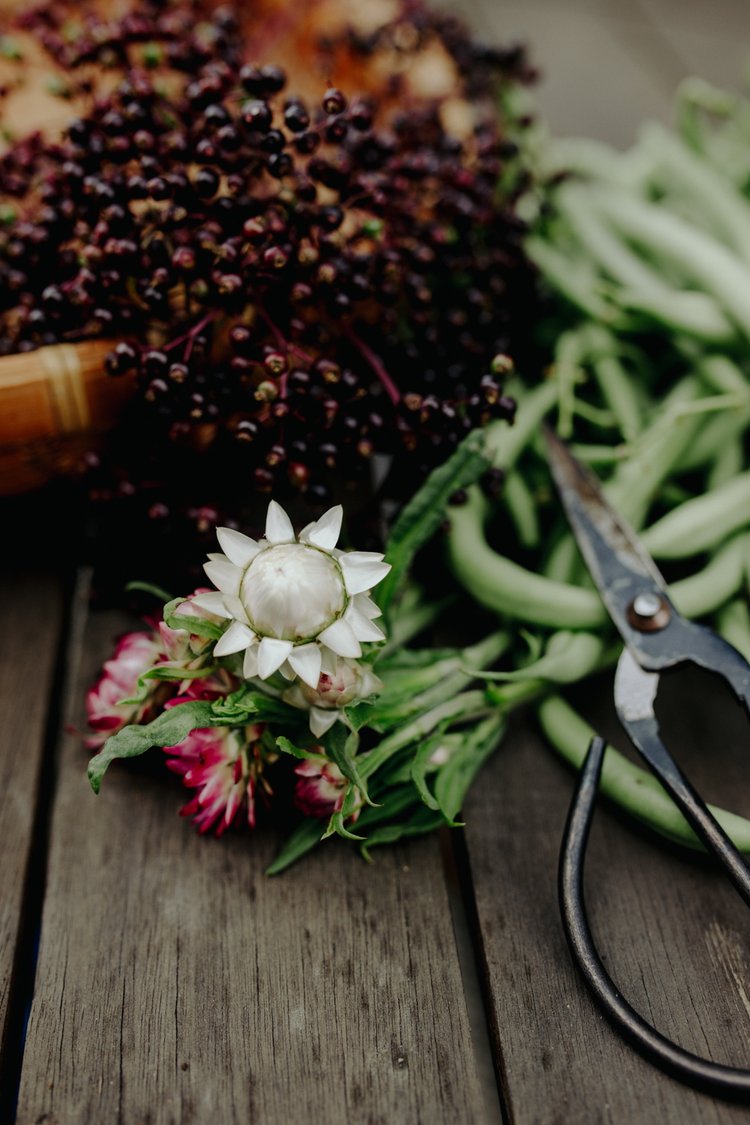
Stovetop Elderberry Syrup
Ingredients
- 1 cup dried elderberries
- 6 cups water
- ¼ ounce grated ginger
- 1 ½ cups raw honey
Instructions
- Bring the berries and water to a boil. Simmer for 30 minutes.
- Strain the berries, and return the liquid to the heat.
- Add ¼ ounce grated ginger. Simmer gently for 45-60 minutes, or until 2-3 cups of liquid remain.
- Remove from heat and allow to cool to room temperature.
- Stir in 1 ½ cups of raw honey.
Notes
To store your elderberry syrup, pour your syrup into an airtight bottle, label it, and refrigerate. Use within 2 months.
Storing Elderberry Syrup
Pour your syrup into a bottle, label it, and refrigerate. Use within 2 months.
Using Elderberry Syrup:
For medicinal use:
Take 2 teaspoons every 3 hours at the first signs of a virus.
Other uses:
Elderberry syrup can be used as a cordial, mixed with seltzer or water, or as a shrub for cocktails.
It can also be added to yogurt, pancakes or oatmeal for a tasty treat.
The garden tools I need to have in my shed
The planting of seeds by humans is believed to date back tens of thousands of years. Even before that, people cultivated food forests by protecting useful plants and eliminating those which provided them with no benefits.
In ancient times, a hole might be dug with a stone or stick, and water carried from a river in an animal bladder.
All that to say, it’s not the tools that make the garden. In the past, I have gardened quite happily with one shovel and a hand cultivator/hoe, but there’s no denying that having the right tool for the job makes the work of gardening easier and more enjoyable.
The Cottage Peach is reader-supported. When you purchase through links on our site, we may earn an affiliate commission at no additional cost to you. All opinions are our own.
What Tools Do You Need to Garden?
The planting of seeds by humans is believed to date back tens of thousands of years. Even before that, people cultivated food forests by protecting useful plants and eliminating those which provided them with no benefits.
In ancient times, a hole might be dug with a stone or stick, and water carried from a river in an animal bladder.
All that to say, it’s not the tools that make the garden. In the past, I have gardened quite happily with one shovel and a hand cultivator/hoe, but there’s no denying that having the right tool for the job makes the work of gardening easier and more enjoyable.
Are Garden Tools Expensive?
Garden tools are available at all price points. There will always be an endless chorus of marketers telling you this tool or that is better than the other, but remember you’re digging soil and planting seeds - not building a spaceship. You want something durable, but not necessarily fancy.
In some cases there is a real difference in quality between the cheaper and more expensive options. If you have a bit of money to spend on tools, the choice becomes, in which cases is an investment in a pricier tool a good financial decision?
But no matter what your budget is, there are sources other than the hardware store or internet from which to acquire tools. Just about every garage or estate sale has some which, while not brand new, have stood the test of time and have years of life still in them. Better yet, many older relatives have amassed a collection over the years and would be happy to pass them on to someone a bit more spry. Often these older tools are better made than what you’d find today. If they’re in rough shape, it’s easy enough to sharpen a hoe or replace a shovel handle.
These options not only save money, they mean less is produced and less ends up in a landfill.
My Favorite Gardening Tools
As I said, in the past I have gardened with two simple tools. But at this point, our gardening has expanded enormously, and we’re lucky enough to be able to carefully spend on tools which make our work easier and are durable enough to last a lifetime. Barebones Living is a favorite among gardeners because they check all these boxes - plus, they are a certified B Corp dedicated to protecting the environment. You can find my favorite selections from Barebones below:
Seed Starting Tools
One of the foundations of economizing in our gardening is seed starting. It saves so much money as compared to buying plants!
There are many cheap and accessible ways to start seeds. Egg cartons, newspaper, or even toilet paper rolls can be used to hold your soil.
How to Make Seed Pots From Toilet Paper Rolls
Step one is to rummage through your recycling for TP rolls. Better yet, skip the recycling bin and save them up throughout the year for use in the spring.
Once you have your empty rolls, just cut four 1 1/2” slits in one end of the tube and fold them over themselves to create a bottom. Fill with soil and your seeds and get growing!
Using a Soil Blocker to Start Seeds
These days, we use a soil blocker when starting seeds. It’s a simple tool that allows me to work a bit more quickly, which is helpful for those times when I’m not feeling well enough for a longer project.
Blocks are also great for the plants themselves. Because each block is planted directly into the garden, the roots are not damaged and the plants aren’t likely to experience any transplant shock, giving them a stronger start on life.
One potential drawback of this tool is that it might be difficult for someone with arthritis or other pain in their hands to squeeze the handle that releases the blocks from the mold, so that’s something to keep in mind.
How to Use a Soil Blocker
Soil blocking is really easy once you get the hang of it. You might read in a catalog or hear from another gardener that you need a fancy soil blend designed for soil blocking, and I’m sure it would be nice to have, but I’ll take the giant $15 bag of soil from Lowes please and thank you. I’m not about to ship $50 worth of soil to my house - call me lazy, or a bad gardener, but I never have and everything grows just fine.
Just take your soil, mix water in until it’s just a little drier than mud and get pressing. The trick is to really firmly compact the soil into the mold with your hand as hard as you can. The blocker will form a small divot on top into which you can plop your seed. Cover with a bit of loose soil, and that’s all there is to it!
Tools for Planting
There are endless options for digging a hole, and I’m sure you’re familiar with most of them. A shovel or spade is best for larger holes, but one tool I particularly like for planting seeds and seedlings is the Japanese Hori Hori knife.
Like any knife, it’s best to find one which has a full, or integrated, tang, which will make it much more durable. With a full tang, the metal extends the whole length and width of the handle.
Why Use a Hori Hori Knife for Planting?
A Hori Hori has multiple uses, including weeding and cutting roots and small branches, but in the case of planting, there are two things that make it the right tool for the job.
One is that the point is sharp, but wide enough that, with a twist of the wrist, you can cut a hole rather than just a slash in the soil. The second is that most Hori Hori knives are marked to show you the depth of your hole, which is really helpful when planting seeds.
Tools for Weeding
I’ve used hand cultivators and spades, Hori Hori knives, standing hoes, and shovels to weed over the years. I still prefer a shovel for very large weeds, but the tool I use most often to weed is this Japanese Weeding Hoe.
This hoe is very sharp. I use it to loosen the soil under and around the weed so I can easily pull it up and not lose any roots. The blade is also narrow enough to use around things I have planted without fear of damaging them.
Tools for Watering Plants
Not rocket science here, any container or hose will do, but I do have my favorites. I have some difficulties with most hoses, which basically come down to the fact that I have a chronic illness. Most hoses are quite heavy and tend to kink. So aside from it being difficult for me to pull them out or coil them back up because of the weight, I have to walk back and forth any number of times to straighten up the hose so the water can flow through it, which quickly exhausts me.
I’ve found two hoses that solve these problems for me.
Hoses That Make Gardening More Accessible
The Flexi Hose is a lightweight, expandable hose which does not kink. It’s available in lengths up to 150 feet and has solid brass connectors. We’ve had ours for three or four years now, and are very happy with it.
A more serious option if you’re looking to invest in a dedicated system is a Hoselink retractable hose reel. For me, this hose was worth every penny. Even with a lighter hose like the Flexi Hose, it can be difficult for me to pull the hose where I need it and then get it coiled back up. The Hoselink solves that problem by automatically retracting the hose when I give it a small tug. It still takes a bit of effort for me to pull it out to its full length, but it does not leave me fatigued the way other hoses do.
It comes with a wall bracket, and can be mounted on a pole or the side of your house. The longest length available for the Hoselink is 82 feet. I’d love a longer one, but it is definitely the hose to choose if you have a larger budget.
Pruning Tools
Like a lot of gardeners, I am fiercely loyal to my favorite pruners – the Felco F2 Classic hand pruners.
Aside from being able to cut through fairly large branches, they are comfortable to use, have a thumb mechanism for one-handed opening and closing, and are easy to sharpen. On top of that, each of the pruner’s components is replaceable, meaning one pair, with some care, can last a lifetime.
How to Care for Garden Tools
It’s no use spending money on tools only to let their condition deteriorate over the years. Caring for your tools will make them last longer and be more pleasant to use.
Clean Your Tools
Give your tools a quick scrub or hose-down after using them. Be sure they are dry before putting them away.
In the case of pruners, it’s important to wipe them down with rubbing alcohol after each use. If you are pruning more than one tree, wipe them after you finish with each one, to avoid potentially spreading disease from one tree to the next.
Store Your Tools
It can be a pain to schlep everything back in when you’re tired out from gardening, but leaving tools outside is a recipe for disaster. Store them in a dry place, and hang longer tools so as not to dull their blades.
Sharpen Your Tools
Some tools come with their own sharpeners, but for those that don’t there are a wide variety available. Keeping your tools sharp will cut down on frustrations from them not working as well as they should when you need them.
Oil Your Tools
It’s a good idea to apply a lubricating oil to wooden handles and metal blades. This doesn’t need to be done every time you use a tool, but it’s great to do in the spring and fall. It will keep metal from rusting and wood from splitting.
Click here to shop my favorite gardening tools at Barebones Living
Easy Vegan Applesauce Recipe
WHY GO APPLE PICKING?
Aside from experiencing the perfect day, why go apple picking at a farm instead of buying apples at the grocery store? Taste is one reason. An apple from the grocery store is likely to be a year old.
Store-bought apples last so long because waxes and chemicals are applied by producers. Insecticides and fungicides are put on the apples to protect them from insects and bad bacteria, allowing the apples to stay ‘fresh’ when kept in cold storage.
In contrast, an apple picked from a tree on a sunny, cool day is a food unto itself.
The Cottage Peach is reader-supported. When you purchase through links on our site, we may earn an affiliate commission at no additional cost to you. All opinions are our own.
When I was a child, my parents got a group of friends together to go apple picking, and a tradition was born. For over 20 years we traveled to Honey Pot Hill Orchard in Stowe, Massachusetts. Honey Pot has 186 acres of orchard land, and has been run by the same family since 1926. Its trees are planted on rolling hills with wide lanes between them, and have orchard ladders leaning against them just waiting to be climbed.
We traveled the orchard in a pack, balancing on each other’s shoulders to reach the perfect apple far overhead, steadying ladders, and filling increasingly heavy bushel bags with more apples than they could reasonably hold.
We ran down hills and took pictures and laughed and smelled the unique-to-orchards, sweet aroma of fallen apples fermenting in the grass beneath the trees.
At the end of the day, we made our way through the hills to the farm store for a gallon of cider to drink and a gallon of cider to bring home, and to the bakery window where we bought bags and bags of cinnamon-sugar coated cider donuts.
We’d plop ourselves down on a grassy hill nearby to munch and drink and watch the people standing in the long line for donuts. Every visit was the perfect day.
Why Go Apple Picking?
Aside from experiencing the perfect day, why go apple picking at a farm instead of buying apples at the grocery store? Taste is one reason. An apple from the grocery store is likely to be a year old.
Store-bought apples last so long because waxes and chemicals are applied by producers. Insecticides and fungicides are put on the apples to protect them from insects and bad bacteria, allowing the apples to stay ‘fresh’ when kept in cold storage.
In contrast, an apple picked from a tree on a sunny, cool day is a food unto itself.
More importantly, we need farms and orchards. If we just buy fruits and vegetables from a grocery store, we may lose the remaining farms we have.
The majority of a farm’s income comes from seasonal activities. Apple picking with cider and donuts, pumpkin picking with hay rides and corn mazes, vegetable farms transformed in winter to sell Christmas trees and wreaths, these are the ways a farm survives.
When we fill a bushel bag and grab a gallon of cider, we are benefiting both the farm and ourselves, our environment and our culture.
Why Pick a Lot of Apples?
Nutrition and taste, of course, but also because apples are so versatile.
We can eat apples fresh, use them in pie or cake, make applesauce, or slice them into rings and dehydrate them for a crispy snack. We can make apple butter, add slices to a grilled cheese sandwich, and use them to create stamps for painting projects.
They can speed up the ripening of other fruits if we’re feeling impatient, help reduce inflammation when used as a face mask, and can even be used to make spooky shrunken heads to keep the kids entertained.
What Kinds of Apples Store Longest?
If you buy a few apples at the grocery store, you might keep them in a bowl on your counter or, to make them last a bit longer, store them in your refrigerator.
But if you have a large quantity that you want to eat over the course of a few months, a different storage solution is required.
The first two steps in storing apples that will last are done at the orchard. First, choose apple varieties that are crisp and tart, with thick skin.
Apple varieties that store well:
Granny Smith
Honeycrisp
Northern Spy
McIntosh
Fuji
Winesap
The second thing that should be done at the tree if you want to store apples long-term is to harvest them properly. Apples should be twisted from the branch, not pulled, and they need to be handled very carefully, like eggs, so they don’t develop bruises.
Choosing Which Apples to Store:
Once you’re back home, you want to choose the best of your apples to store.
Choose apples with stems. An apple without a stem is easier for microorganisms to enter, where they will cause the apple to decay.
Choose apples with no blemishes, soft spots, or bruises. A bruised apple will cause the apples around it to rot. Like they say, one rotten apple spoils the bunch.
Where to Store Apples
Traditionally, apples were stored, along with other fruits and vegetables, in a root cellar. Most people don’t have a root cellar these days, but we can look at what is valuable about a root cellar and mimic those conditions as best we can.
The fact that root cellars are dark and cold is what allows for a longer shelf-life for apples. Apples like a temperature above 32 degrees and below 38 degrees best. But we don’t need to have the ideal spot and temperature to keep apples for months.
An unheated basement, an attached garage where the temperature doesn’t fall below 32 degrees, or a closet in a cool room are all good spots to store your apples to extend their shelf-life.
How to Store Fresh-Picked Apples
Wrap each apple lightly in paper.
Gently layer the apples in a small wooden crate or cardboard box. Be careful not to bruise the apples or let them sit in direct contact with each other.
You’re going to want to check on your apples once a week to make sure there aren’t any that are bruised or rotting, so make it easy on yourself by spreading them out into a few different containers.
Alternatively, if you plan to store lots of apples regularly, you can purchase an apple storage rack.
Other Ways to Store Apples Long-Term
Apples can be frozen, although they will lose their crisp texture and will be better suited for use in apple pie or apple butter than for eating directly.
To freeze apples, cut them up, toss them with lemon juice, and pat them dry with a clean cloth. You can then put them directly into a freezer bag, or you can flash freeze them on a cookie sheet and move them to a freezer bag once they have frozen. Flash freezing minimizes the chance the fruit will stick together in a solid block.
Apples can also be canned using a water bath.
Why Make Homemade Applesauce?
Making homemade applesauce allows you to control both the taste and the texture of the sauce. Like your applesauce to be very smooth? Puree it. Like your applesauce lumpy? Just skip the puree.
Cinnamon, strawberries, maple syrup, vanilla bean, orange peel, even cayenne pepper – the flavoring options for applesauce are endless.
Making applesauce can also be an even longer-term way to store apples.
The Secret To Making the Best Applesauce
The number one best thing you can do to make the perfect applesauce is to use more than one kind of apple. Using two or more varieties adds a depth of flavor which you will not find at the store. Experiment with different variety combinations to find the ones you love the most.

Easy Vegan Applesauce
Ingredients
- 8 Apples (or as many or few as you’ve got)
- 1-2 TBSP Sugar (optional - I prefer raw sugar for this recipe)
- Splash of water (depending on your preferred thickness)
- Cinnamon, strawberries, maple syrup, vanilla bean, orange peel, even cayenne pepper – the flavoring options for applesauce are endless.
Instructions
- Cut the apples into chunks, peeled or not, depending on what you like.
- Put the cut up apples in a pot.
- At this point you can add a small splash of water to keep them from sticking to the pot before their juice starts to flow. Alternatively, you can watch them very carefully and stir them while they heat up.
- When the apples have made some juice, add sugar to taste.
- Cook on medium-high heat, stirring occasionally.
- If you find your apples are sticking to the bottom of the pan, turn down the heat and/or add a splash of water.
- When the apples are soft enough to break with the back of a spoon, remove the pot from the heat. For 8-10 apples, this might take about 10 minutes from when they begin to boil. For greater quantities, it will take a bit longer.
- Taste the sauce again and stir in more sugar if you’d like.
- If you want a smooth applesauce, puree it with an immersion blender.
- If you’d like a chunky applesauce, you can leave it as is, or smash it a bit with a fork or potato masher.
Notes
You can let your applesauce cool and store it in the fridge in an airtight container or jar.
If you’d like to extend its storage life, though, applesauce is the perfect food for a beginner to try canning.
Nutrition Facts
Calories
104.09Fat
0.36Sat. Fat
0.06Carbs
27.5Fiber
4.44Net carbs
23.06Sugar
21.21Protein
0.5Sodium
3.4Cholesterol
0How Many Apples Do I Need to Make Applesauce?
The great thing about this recipe is, it’s more of a formula. There is no set number of apples you need to make applesauce. You can make it with one apple or a hundred. (If you have a big enough pot!)
In general, it takes 8 medium-sized apples to fill a jar the size of the bigger jar (not the huge jar) available at the grocery store.
Easy Homemade Applesauce Recipe
This applesauce recipe is easy, vegan, and a great beginner recipe for kids and adults. I think it’s the best applesauce recipe, because it is so simple, and requires only 1 or 2 ingredients (depending on whether you want to sweeten it).
It gives you a base from which you can create your very own, favorite applesauce.
You can leave them unpeeled or peel your apples before chopping. Add your apples to the sauce pan and cook until soft.
How to Store Applesauce
You can let your applesauce cool and store it in the fridge in an airtight container or jar.
If you’d like to extend its storage life, though, applesauce is the perfect food for a beginner to try canning.
Ways to Use Applesauce
Applesauce can be used to flavor muffins, cakes, and breads.
It can also be used to replace oil in baking recipes, where it will add a bit of moistness to your bake.
Applesauce is a delicious and nutritious snack or dessert.
As the Brady Bunch taught us, applesauce is the perfect side dish for pork chops.
Warm applesauce is a nice topping for a sundae.
Applesauce on oatmeal is absolutely yum.
Traditionally, latkes are eaten with applesauce and sour cream.
DIY Biodegradable Leaf Confetti Craft Project
My favorite thing to do during the fall season is to find different ways to celebrate this transitionary season through leaves. Although leaves can feel like a celebration all on their own as they sprinkle down from above, I love a good DIY craft project, so I wanted to take it one step further and create some DIY biodegradable leaf confetti!
The Cottage Peach is reader-supported. When you purchase through links on our site, we may earn an affiliate commission at no additional cost to you. All opinions are our own.
I'm so glad I live in a world where there are Octobers.”― L. M. Montgomery, Anne of Green Gables
October in New England is always a special time. I don’t take for granted that we have easy access to the premiere fall leaf peeping destinations in the entire country, with the Berkshires in Massachusetts, and the White Mountains of New Hampshire nearby. While the first fallen leaf is met with a small sense of panic, soon I find myself easing into the simple, predictable rhythm of fall and smiling with each elm, oak and maple leaf I see. The maple leaves, with their bright and bold hues of yellow, orange and red, are my favorites. Although, to be honest it’s not one singular leaf that calls to me but the copious amounts of leaves as a whole, listing about as they fall through the cool autumn air and accumulate in crunchy, delicious smelling piles in every corner of the land. We are lucky to be surrounded by healthy deciduous trees on all sides, and each autumn season I look forward to counting them fall to the ground. I pick them up distractedly on my walks, feeling the endless ridges of the veins beneath my fingertips - a plastic free, all nature fidget toy if you will.
The sound of each crunch underfoot is a reminder that nothing lasts, tomorrow is not promised and summer has reached its end. That all things return to the earth, and only belong to us for a short while. I will miss the greenery dotting each branch and limb as winter draws closer and bare branches dominate the landscape. But all things must be born anew in the spring, and without the falling leaves, this would not happen as it should. If the leaves never left the trees, we would take them for granted all summer long instead of appreciating their friendly shade and whispers in the breeze.
And what about the vivid memories of the sound of leaves being raked into a mountainous leaf pile by a grown up for you to pounce in and bury yourself and breathe deeply of the decomposing earth as a child? I can’t think of a more calming memory than the hush that fell over me with my small body tucked in among the maples and elm and oak. I remember a sense of wonder that I could now touch something which had lived fifteen or twenty or thirty feet above my head all summer, an impossible distance overcome by mere gravity. If I could sleep in that childhood leaf pile made for me with love, I would.
Why You Should Leave Leaves
Perhaps my neighbors shake their heads at our laziness (although I think not, we have great neighbors) when they notice that we do not rake our leaves into those large paper hardware store bags and remove them each fall. A green lawn may be nice for some, but what fallen leaves can do for the earth and the insects that inhabit it is even better. So we choose to intentionally leave the leaves overwinter - you’ll find that they break down quite readily by spring time, and in the meantime offer a whole host of invisible benefits you may not be aware of. The cycle of leaves is an important part of nature’s ecosystem, here’s why:
Helps suppress weeds - many weeds make their start in very early spring, before the plants you actually want to grow have a chance to establish themselves. Leaving your leaves creates a protective barrier that blocks sunlight which can slow the growth of unwanted plants.
Provides valuable nutrients - the soil is full of microorganisms which are essential for healthy plant growth, but microorganisms need to eat too! As leaves break down, they compost and return vital nutrients to the soil which are then taken up by these microorganisms and plants to help them grow.
Protects overwinter insects - have you ever wondered where all those creepy crawly insects invading your personal space all summer go during the colder months? Well, it’s safe to say a fair number of them are hiding out in the local leaf pile, hunkered down and waiting for warmer days. Without dry and warm habitats like leaf piles, many insects have no place to safely weather cold winter conditions. Leaves also offer food, shelter, nesting and bedding materials to a variety of wildlife. When we disturb these micro insect ecosystems, it can have many unintended consequences for the environment.
Insulates trees, shrubs and other plants - especially in colder climates, winter can cause real damage to your trees, shrubs and other plants which aren’t as cold hardy. A freeze can cause instant plant death or shock that can severely impact growth and productivity of your plants. Leaves provide a natural blanket which protects these plants from the elements.
All this to say, I have a lot of feelings about leaves! My favorite thing to do during the fall season is to find different ways to celebrate this transitionary season through leaves. Although leaves can feel like a celebration all on their own as they sprinkle down from above, I love a good DIY craft project, so I wanted to take it one step further and create some DIY biodegradable leaf confetti!
Confetti is so fun and great for celebrations like baby showers, engagements, weddings and birthdays, but more often than not it is made of shiny plastics and other materials that do not break down after they are thrown away. Not to mention the packaging involved. Biodegradable confetti allows you to have all the fun of regular confetti without the negative environmental impact, so you can enjoy your celebration without any guilt.
Now, you can probably figure out that there are two ways to go about doing this - one would be to just literally gather a basket of whole, small leaves and sprinkle them as you see fit. And that totally works as ready made confetti, or a delightful prank to pull on someone that’s not quite so messy as a pie to the face. But this is a celebration right?! So let’s make it extra special with a confetti diy using different shapes created with a paper hole punch.
For this project I grabbed a heart and star shaped hole punch, but any shape will do - circles, stars, even a tiny leaf would be so cute! They make all different sizes of hole punches, you could use a larger hole punch that is normally used for scrapbooking too. Here are a few options for hole punches that should work well for this project if you don’t have one already:
You’re going to want to collect your leaves first. Make sure to select leaves with the brightest colors that are flat and fully dried without being crumpled or so crispy that they just fall apart in your hand. If you’re unsure which leaves will work best, grab a few different ones before you really get started collecting and just test them out with your hole punch. The hole punch should be able to cut through them quickly and easily without breaking the leaf - just like paper.
Once you have a good amount of leaves filling your basket, find a nice spot to sit and get punching. This can be a really great mindfulness opportunity. Pay close attention to the sensation of the leaves in your hands, the sound of the hole punch snapping shut and opening, the smell of earth wafting up from the basket and the feel of the confetti in your hand. Who would have thought this simple confetti craft could have so many benefits?
After you’re finished creating your confetti, you can even create a simple paper cone to help you to toss your new confetti in the air! I like to do this by cutting a circle shape out of paper and then cutting a pie shaped wedge out of the circle before wrapping it in on itself and securing with washi tape. Fill up your paper cone and get ready to celebrate!
How to make biodegradable confetti instructions
Supplies:
Leaves, flat and dry with bright colors
A basket or some other kind of container for collecting the leaves
A large metal scrapbooking hole punch (½-2” wide)
One sheet of paper
Washi tape
Instructions:
Collect leaves in a basket. Look for leaves that are flat and dry with bright colors. Working around each leaf from the outside edges in, use your hole punch to punch out confetti shapes from the leaves until you run out of usable leaf. Continue punching out the confetti from the leaves until you have enough confetti to fill a cone (about one cup). For the paper cone, cut a large circle out of the piece of paper. Then, cut a pie shaped wedge out of the circle. Wrap the circle around itself to form a cone shape and secure it with washi tape. Fill the cone with the biodegradable leaf confetti and enjoy!

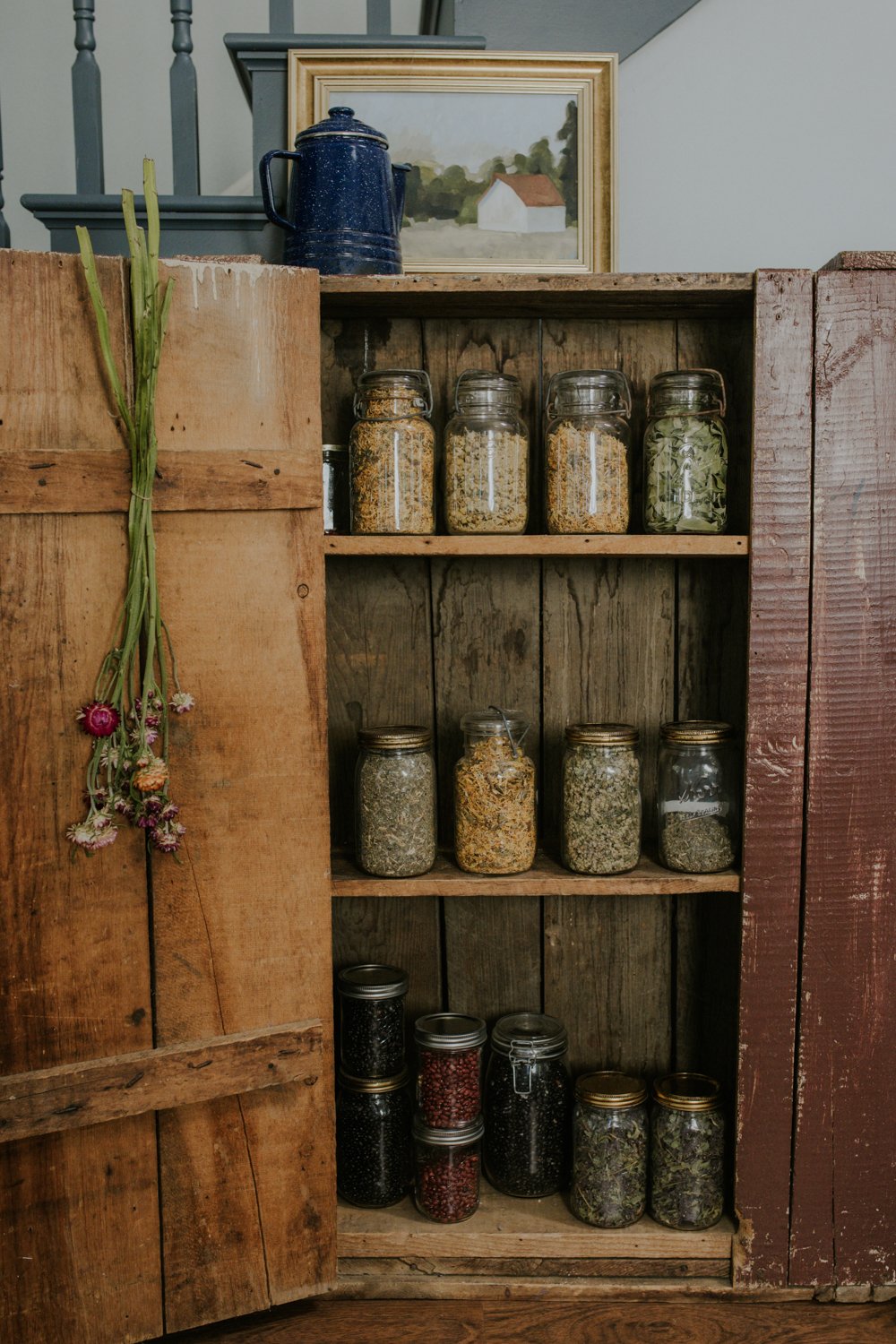
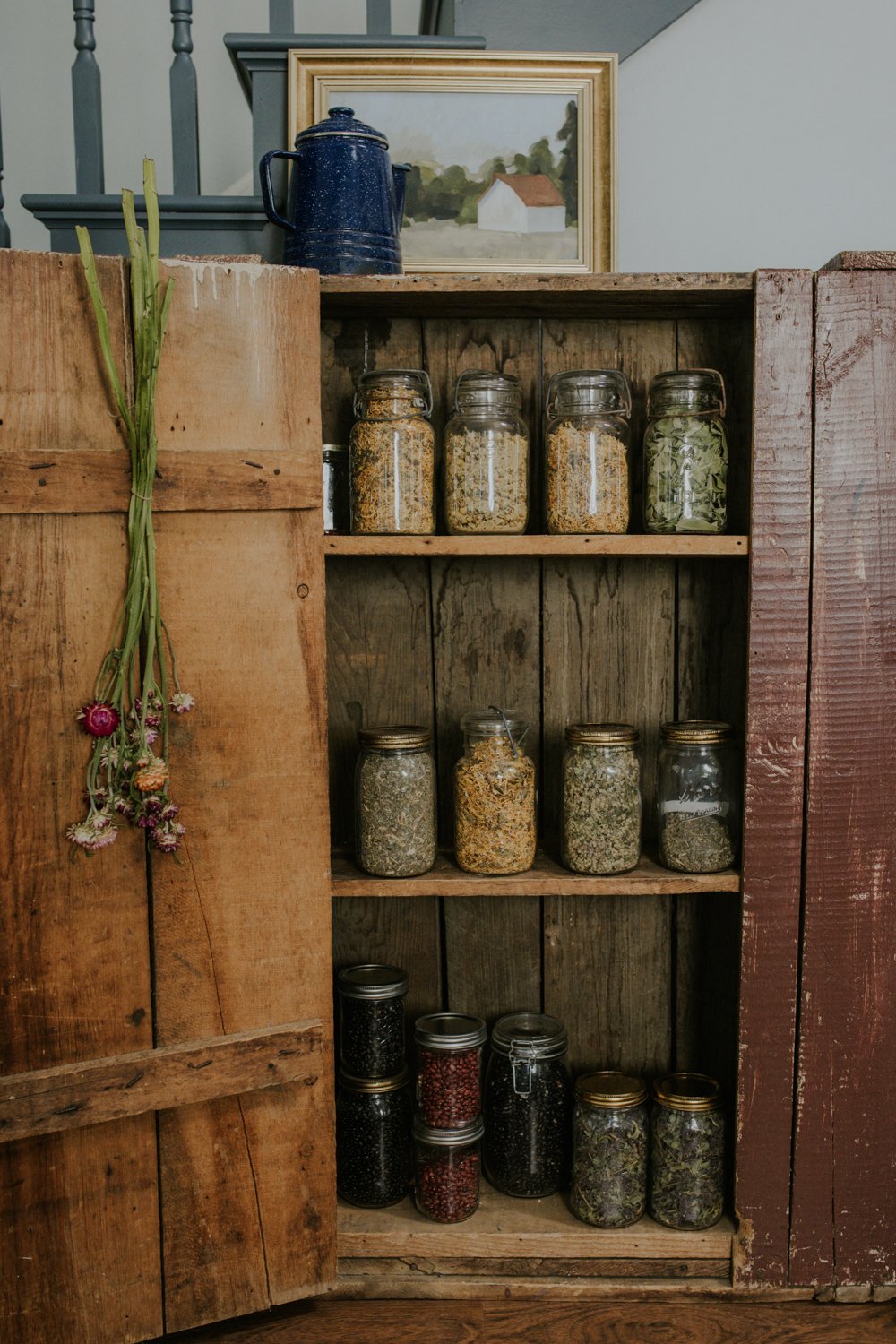
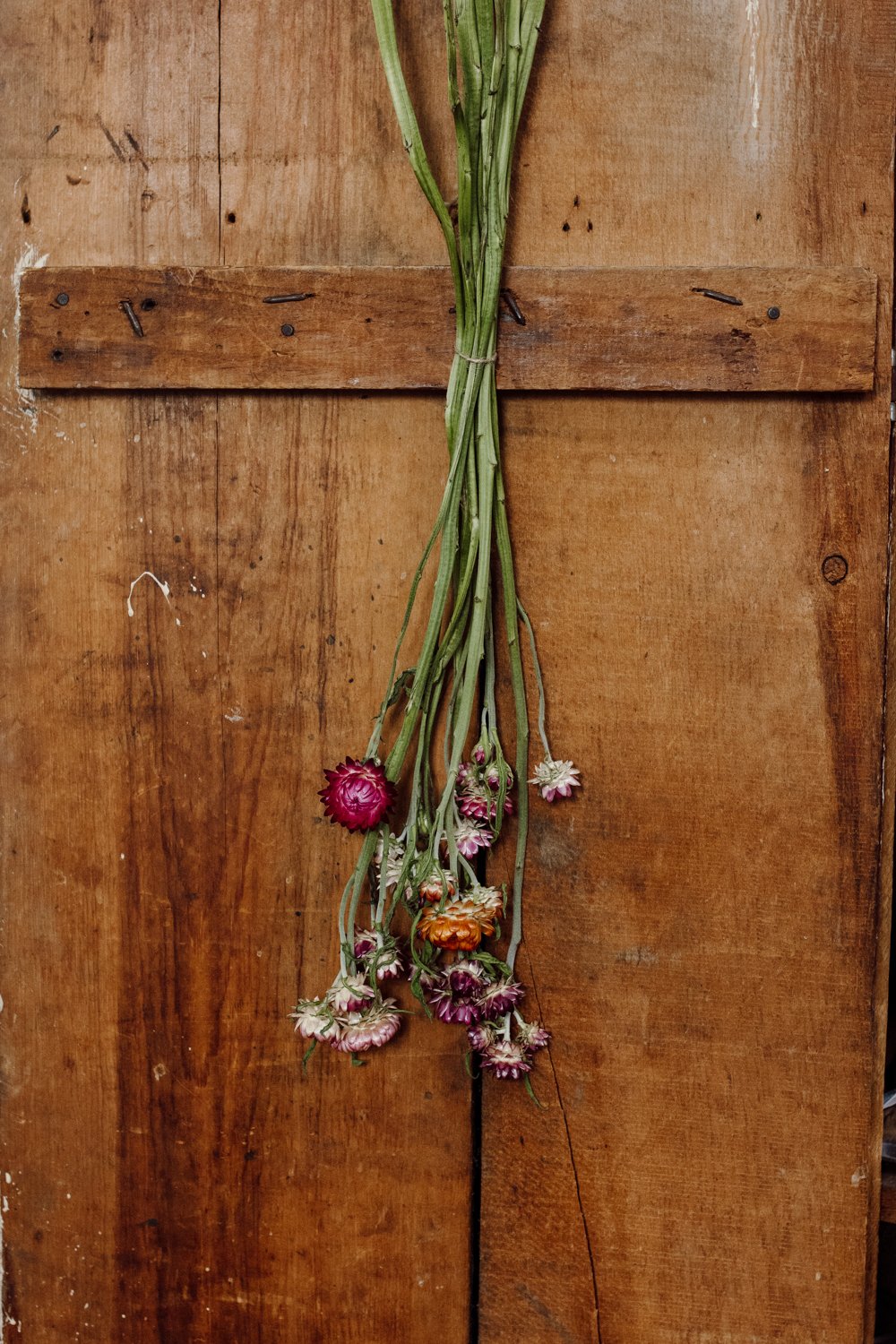

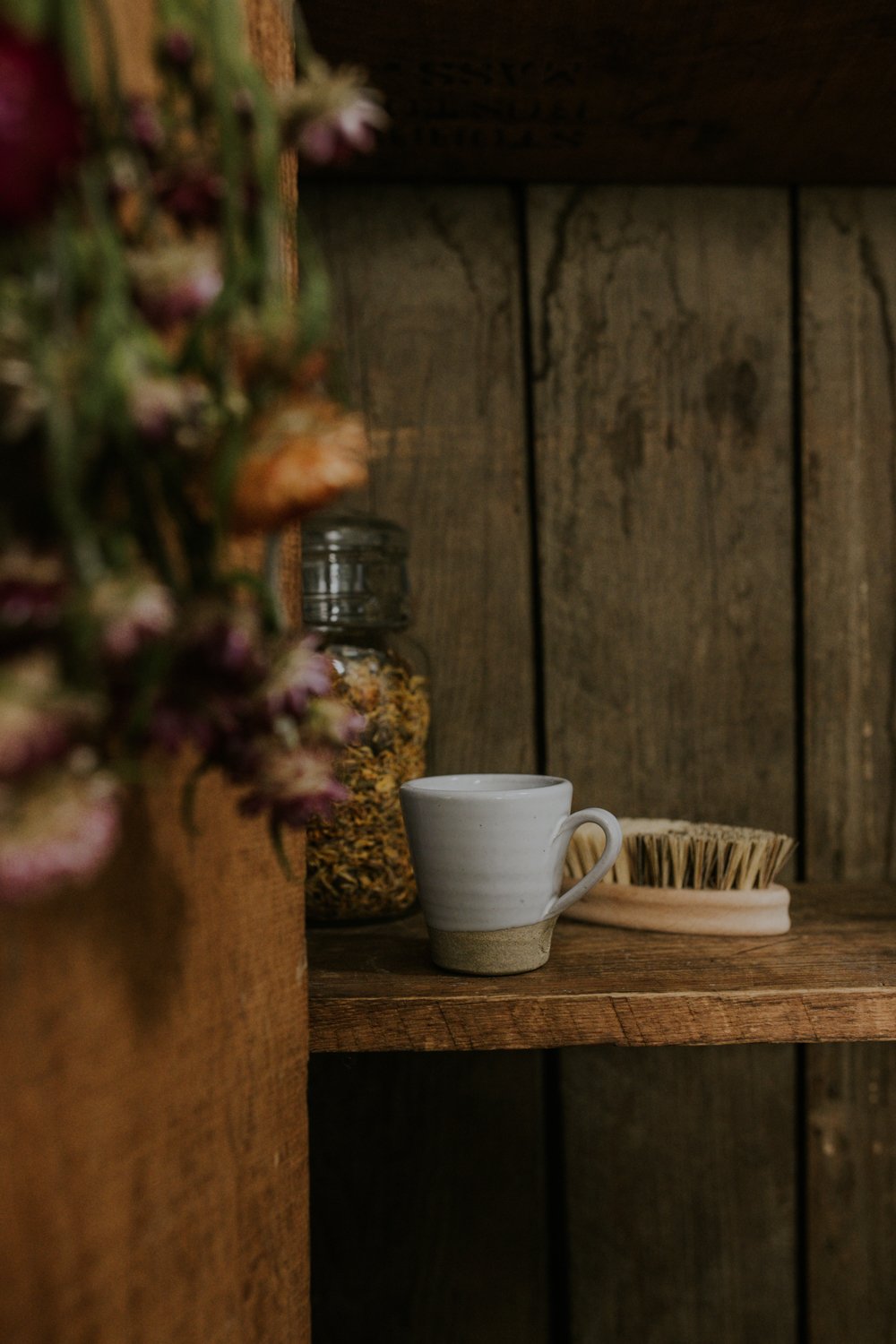



![The Power of Nature: How To Make Infused Oregano Oil for Your Health and Wellness [Recipe]](https://images.squarespace-cdn.com/content/v1/60e85024dc86d643da81c96a/1682625337753-AFI1M6MRRMDQ5CBNY2TX/unsplash-image-Fl2Ki3_GZIU.jpg)
![Make This Easy + Natural Botanical Hand Salve [Recipe]](https://images.squarespace-cdn.com/content/v1/60e85024dc86d643da81c96a/b57698b0-de70-4101-afaf-7af57788237d/Herbal+Face+Steam+Recipe+by+The+Cottage+Peach-1.jpg)


